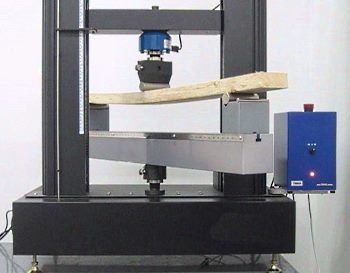property>second moment of area
What is Second Moment of Area?

The second moment of area measures a beam’s ability to resist deflection or bending over a cross-sectional area. It is also known as the area moment of inertia. The second moment of area is used to predict deflections in beams. It is denoted by *I *and is different for different cross sections, for example rectangular, circular, or cylindrical. The unit for this measure is length (in mm, cm, or inches) to the fourth power, i.e. mm4 or ft4. The most common units used in the SI system for second moment of area are mm4 and m4.
Mathematically, the second moment of area can be written as,
Ix = integral (y2 dA)
Iy = integral (x2 dA)
where, Ix is the second moment of area about x-axis, Iy is the second moment of area about the y-axis, x and y are perpendicular distances from the y-axis and x-axis to the differential element dA respectively, and dA is the differential element of area. The area moment of inertia for a rectangular cross section is given by,
Ix = bh3/12, where b = width and h = height
We have to specify the reference axis about which the second moment of area is being measured. The smallest moment of inertia passes through the geometric centre of a body. The area moments of inertia can be calculated for different cross sections of a body. They describe how strong a particular body is, or in other words, how capable it is to resist bending and torsion. The larger the area moment of inertia; the stronger the body.
The second moment of area has applications in many scientific disciplines including fluid mechanics, engineering mechanics, and biomechanics (for example to study the structural properties of bone during bending).
Another Way of Determining Second Moment of Area
Here, another quantity needs to be introduced, known as the normal stress denoted by σ. In simple terms, normal stress represents normal force applied per unit of area. It measures the intensity of force acting perpendicular to dA, which is an infinitely small area. Hence, σ = My/I, where M is the moment acting on the beam, I is the area moment of inertia, and y is the perpendicular distance to a point in the beam where this stress is being applied.
Solving the above equation for I, we get I = My/σ or M/(σ/y). This equation gives us another definition of the second moment of area, according to which it is the ratio of the moment M to the quantity σ/y. Through this definition we find out that the second moment of area is a constant quantity, as both M and σ/y are constants.
Polar Area Moment of Inertia
If we are required to determine the second moment of area where the reference axis is perpendicular to the area, it is known as the polar area moment of inertia. It has been found that this quantity (denoted by the symbol J) is the sum of the moments of inertia with respect to two axes perpendicular to each other and intersecting at a point. Hence,
J = integral (y2 dA) + integral (x2 dA) = Ix + Iy